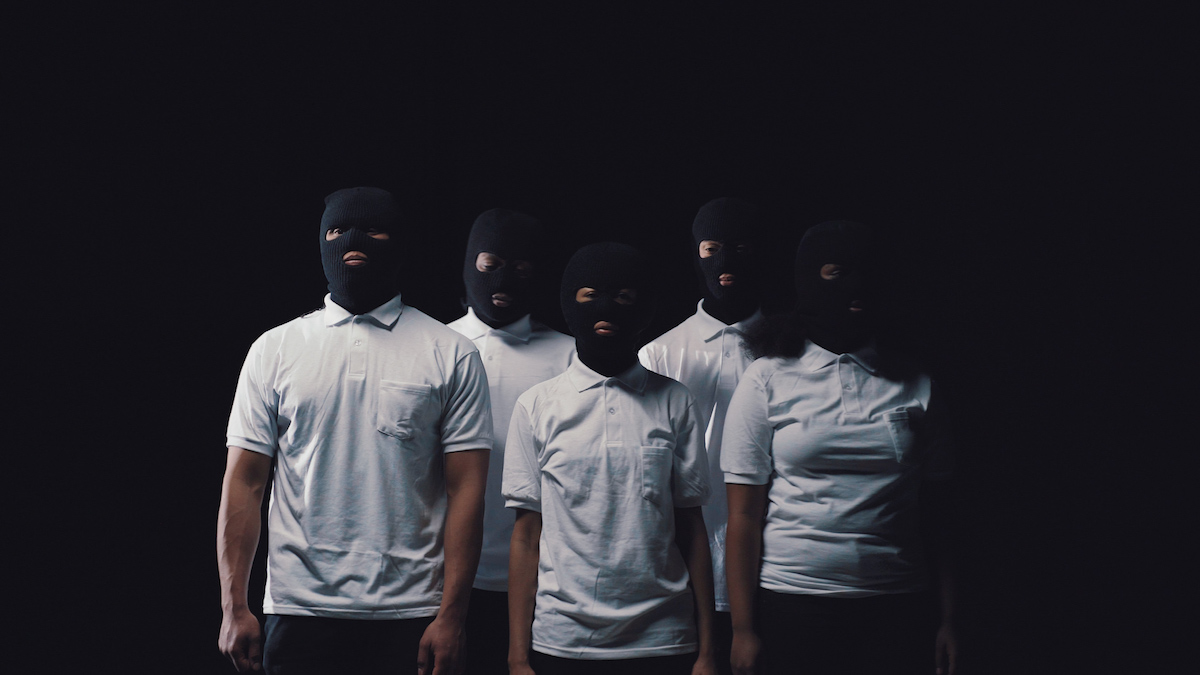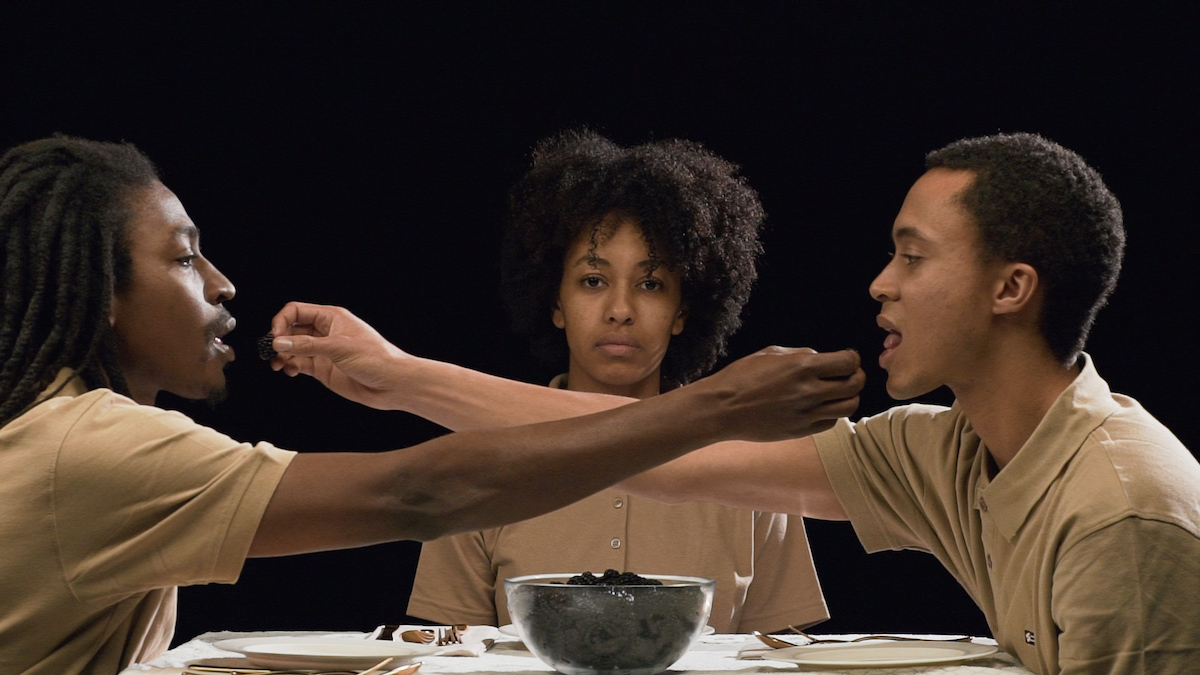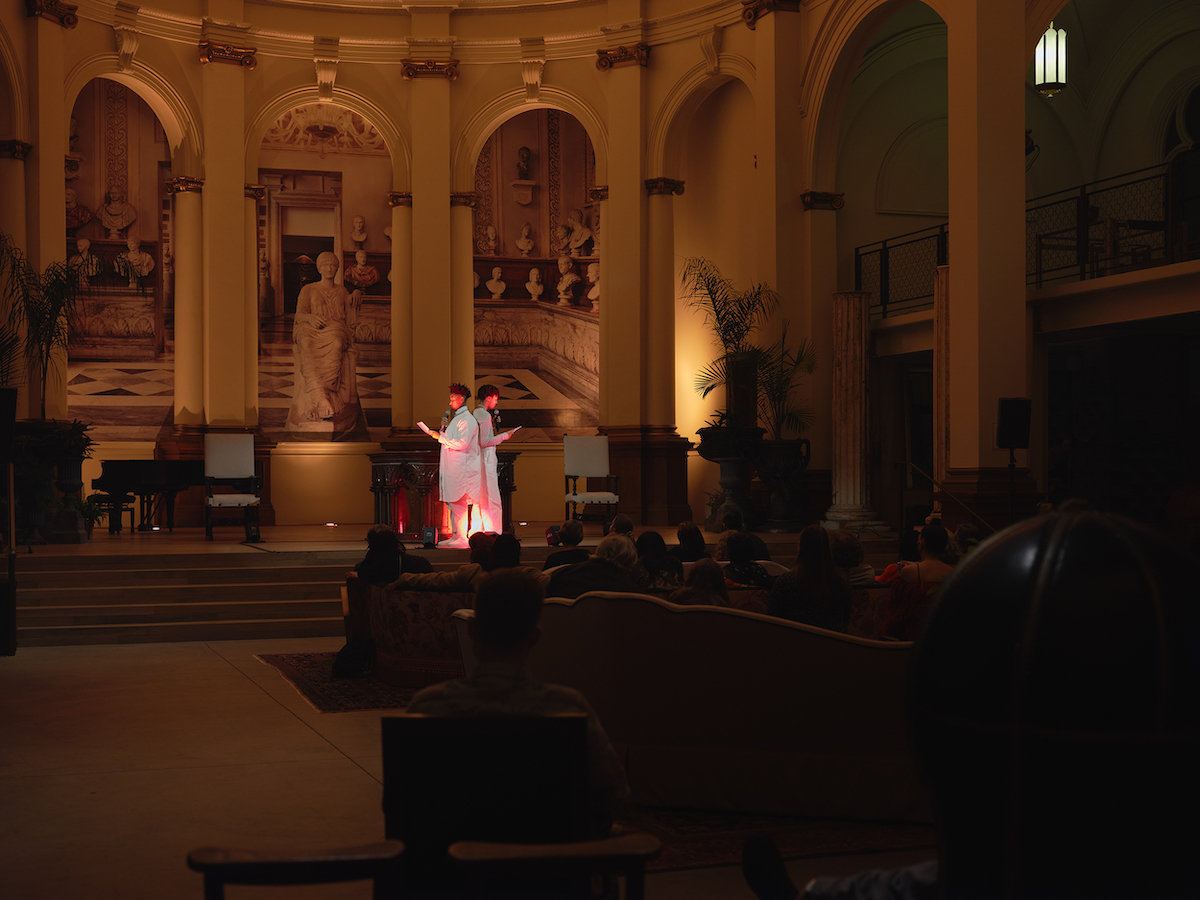Explorations of gender identity are central to the work of Oakland-based artist and curator Leila Weefur, how they felt that their identity was suppressed by belonging to the Christian Church is at the crux of their latest project, “Prey†Play.” Presented in two separate and complementary incarnations, both in San Francisco, one is at Minnesota Street Project, as part of their California Black Voices Project, the other at Telematic Media Arts. Many such twinnings and juxtapositions are found in Weefur’s work, who laughs and acknowledges, “Yes, I’m pretty interested in duality.”
We meet at Minnesota Street Project on one of the artist’s rare days away from their teaching responsibilities—this fall Weefur is a lecturer at both Stanford and UC Berkeley. Their own academic background includes an undergraduate degree in journalism from Howard University, followed by a degree in film from Cal State LA. Weefur then spent several years in the film industry in LA, working on music videos, independent films and reality shows.
It was during this time working in the film industry that Weefur decided to shift to fine art. In the 2010s, it was before the advent of the “movement around contemporary Black cinema” and their interests in any event lay outside the “formulaic structure” often found in Hollywood. Seeking out a liberal arts college, Weefur returned to the Bay Area, to Mills College, where their interests in cross-disciplinary exploration were satisfied by studies in the book arts, creative writing and music departments. The latter is where they met composers Josh Casey and Yari Bundy, who form the duo KYN, with whom Weefur has continued to collaborate on the immersive soundtracks for numerous projects, up to and including “Prey†Play.”

Between Beauty and Horror, 2019, video still, courtesy of the artist.
Weefur’s current work builds on earlier film installations such as Blackberry Pastorale Symphony #1 (2017), Noise and Thirst (2018), and Between Beauty and Horror (2019). The first references the phrase, “The blacker the berry, the sweeter the juice,” a reference to the idea that darker-skinned Black women were somehow perceived as more voluptuous, sexier, in the context of “colorism”—racism against darker-skinned Blacks. Weefur, who never connected with the idea of the femme Black body, creates potent images of men and women interacting with, crushing and consuming, blackberries. Noise and Thirst evolved in response to the artist being accused of stealing from a market in San Francisco by a woman who described Weefur to the police as a “Black man.” It functions as “an experimental sound collage expressing the cadences of Black masculinity.”Between Beauty and Horror “teases out the uncomfortable dynamics and violence that are present in racism” and, as the artist describes it, “performative Blackness.”

Between Beauty and Horror, 2019, video still, courtesy of the artist.
Drawing on their personal experience of the constraints and rigidity implicit in Black Christian churches, Weefur paints a picture that is nuanced and bittersweet, with the pageantry and allure of the church, it’s promise of salvation and the love of God, contrasted with the subtle and not-so-subtle ways religion has worked to control those under its sway. At Minnesota Street Project Prey†Play: A Gospel is set in a darkened space defined by three imposing arches. The video is set in Havenscourt Community Church in Oakland, where the artist was baptized, with red-upholstered pews and stained-glass windows. We hear a childlike voice speaking. “Stand up. Bow your head. Bring the palms of your hands together. Close your eyes. Talk to God.” As the narrator speaks, the actors perform symbolic gestures. Weefur intends the nonbinary characters to act as a point of entry for many different people—a spectrum of LGBTQ and BIPOC, as well as many others.

PLAY†PREY: A Performance, 2021, image courtesy of the artist and Minnesota Street Project Foundation, photo: Jenna Garrett.
The narrator continues, “Dear God, can you see me?… I come in afraid to show myself.” At a young age, perhaps 10, Weefur first became aware of gender discomfort, “I knew I was never going to give birth to a child,” and their parents eventually relented and allowed them to wear pants—rather than a dress—to church; they left the church after baptism at age 15. The narrator speaks, “Power is only power if everyone wants it, and no one has it. I used the only power I had, the power to remove myself from view.”
The actors hide within the pews, then reveal themselves, playing hide-and-seek, then peek-a-boo. These gentle games act as a metaphor for early experiences. The atmosphere darkens as a stern voice intones lines from the Black writer and civil rights activist James Weldon Johnson’s God’s Trombones, his “sermons” on themes common in Black preaching, and an image of his poem “The Judgment Day” appears on the screen. We see images of fire, candles burning, a charred sprig of blackberries. This leads us into the work at Telematic Media Arts, Prey†Play: The Old Testament, where Weefur fills the screen with an image of a burning Bible.

PLAY†PREY: Old Testament, 2021, video still, image courtesy of the artist and Minnesota Street Project Foundation.
Telematic, a much more compact space, sandwiches the viewer between the imagery as a burning book sizzles and snaps, gray flakes of ash curling up and blowing off: Turning, one is startled to catch their own reflection immersed in the video—this side actually a reflection. Weefur likes to catch one off guard, “seeing themselves implicated in the work structurally and conceptually.” Wax candles in the form of crosses lie heaped in a corner, the contribution of collaborator Sandy Williams IV. There are 506 of these, equal to the number of times the word “fire” appears in the King James Version of the Bible. A performance event was also held by Weefur in the nearby St. Joseph’s Art Society, with five other queer and trans writers invited to share “prayers” to be performed with ritual within the highly charged environment of this former Catholic church.
Winding down our conversation at Minnesota St. Project, Weefur reflects for a moment, then speaks, “ …it’s like a child wanting to run around on a field of grass, but there are sanctions that tell you you can only run so far. Like Jim Crow laws, it tells you there’s only one place you can go. That certain places aren’t for you.” Addressing issues very much of this moment, Weefur’s fascinating work raises uncomfortable questions of how we see ourselves, and each other, on a very fundamental and intimate level.


